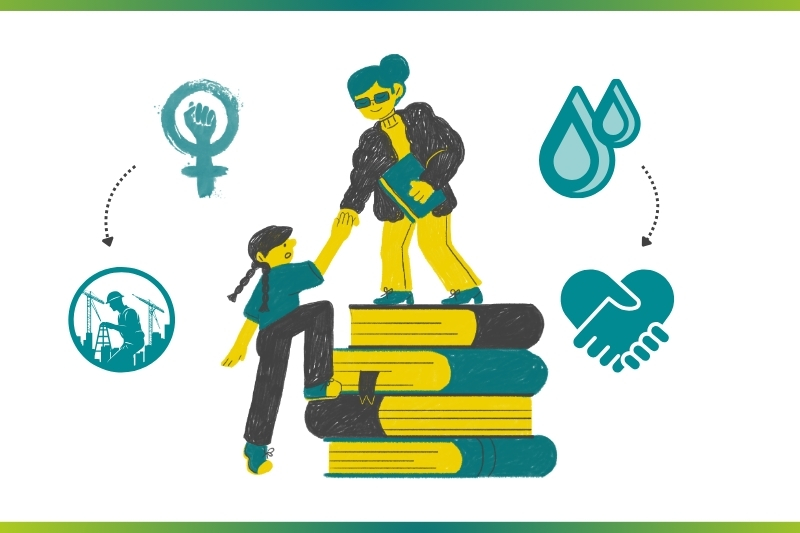
Why Impact Assessments Matter—and Why Chrysalis Gets Them Right
Chrysalis Services
At Chrysalis Services, we take impact and outcomes very seriously. We make it a point to go out there, witness the change and measure it.
Whether it’s a science lab constructed in rural Orissa, a water system installed in Telangana, or a skilling initiative for women in Bihar—our job is to make sure your CSR project is more than just a “formality exercise.” We help you understand what’s working, what’s not, and what could be done better. In short: we assess impact so you can create it—better, deeper, and more sustainably.
And we’ve been doing it across 19 states in India over the last five years.
But what exactly is an impact assessment? And why is it so crucial to your CSR strategy?
Let’s break it down.
What is an Impact Assessment?
An Impact Assessment (IA) is a structured process that evaluates the changes, intended or unintended, that a project has made in the lives of its beneficiaries. It’s not just about counting how many solar panels were installed in schools or how many young people are trained. It’s about understanding what those interventions actually changed in people’s lives.
At Chrysalis, we always go beyond surface-level metrics. We uncover insights that are often missed—emotional, social, behavioural shifts that don’t always show up in spreadsheets.
Why Should You Care?
- Legal and Regulatory Compliance:
Under India’s CSR regulations, companies above a certain threshold must not only spend on CSR, but also report on it. For large-budget CSR programs, especially multi-year initiatives, impact assessments are mandated. - Transparency and Accountability:
Your board, investors, and stakeholders want to know: What was the return on this social investment? That’s where we come in—with a clear, credible story backed by data. - Strategic Improvement:
An honest impact assessment helps course correct. It tells you what worked, why it worked, and how you can scale or replicate it. It also shines a light on what didn’t work—and that’s valuable too. - Brand and Trust Building:
In today’s aware and socially conscious world, a strong impact report can speak volumes. It reflects your deep commitment to not just doing good, but doing it right, in the best way possible.
How We Do It at Chrysalis: A Collaborative Approach
We don’t just drop in, deliver a report, and disappear. We partner with you. Here’s a glimpse into our methodology:
- Step 1: Desk Review & Planning
We begin by deep-diving into your program documents, reports, and existing data. We co-create a detailed assessment plan aligned with your goals. - Step 2: Designing Tools That Make Sense
Whether it’s surveys, focus group discussions, or observation checklists—our tools are contextual, relevant, and field-tested. - Step 3: Ground-Level Data Collection
Our multilingual teams, often women-led, engage directly with beneficiaries—building trust, ensuring data quality, and maintaining cultural sensitivity. - Step 4: Analysis That Goes Beyond Numbers
We use both quantitative platforms (Excel, Power BI, Flourish) and qualitative techniques (case studies, interviews) to synthesize insights that matter. - Step 5: Insightful Reporting
We don’t give you jargon. We give you usable insights, clear recommendations, and powerful stories—from the field to the boardroom.
Frameworks We Use (So You Don’t Have to Worry About Them)
We certainly don’t believe in a one-size-fits-all approach, as it’s not practical. Each project is unique, and so is the framework we apply.
Here are some tools and models we often use:
- Theory of Change
A backward mapping approach that helps us chart the pathway from inputs (resources) to long-term impact. It ensures every activity ties back to your intended outcome. - OECD-DAC Criteria
A globally accepted evaluation framework that assesses projects on:- Relevance
- Efficiency
- Effectiveness
- Impact
- Sustainability
- Coherence
- SROI (Social Return on Investment)
This helps quantify your social impact in monetary terms. If you invested ₹1 crore, how much value did it create for society? We tell you. - Results Framework & Logical Models
These models bring structure and clarity—outlining your program’s inputs, activities, outputs, outcomes, and impact. - Most Significant Change
A powerful qualitative method where beneficiaries themselves share stories that made the biggest difference to their lives. - GAP Analysis, PESTLE, SDG Mapping
These additional tools help us identify strategic gaps, understand external influencing factors, and align your impact to global goals.
Technical Meets Human
Sure, we have the technical chops—GIS mapping, water and soil testing, biodiversity tools, NDVI imagery, SPSS—you name it. But our real strength lies in the human element.
We know and understand that real impact goes beyond the numbers. It’s about what those numbers represent, such as: a girl who stayed in school despite difficulties, a farmer who doubled his income in a remote region, a village that finally got clean drinking water.
Our assessments capture those shifts. And we do it with empathy, ethics, and a deep respect for the communities we serve.
Why Chrysalis?
- Domain Expertise across sectors—from health, education, women empowerment, livelihoods to agriculture and WASH
- Pan-India reach
- Culturally sensitive, multilingual field teams
- Data-driven, story-backed reports
- Value for money and client-friendly approach
We bring the perfect balance of rigour + relevance.
